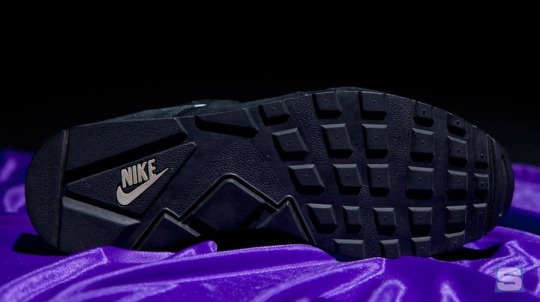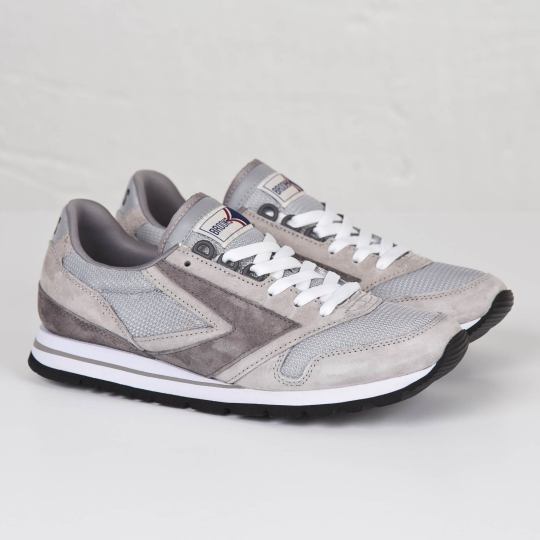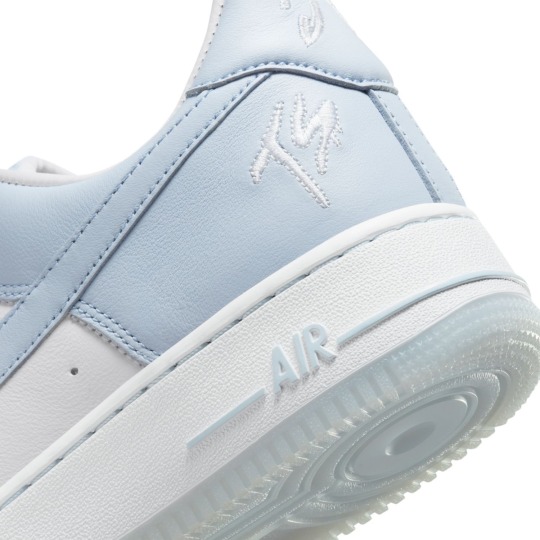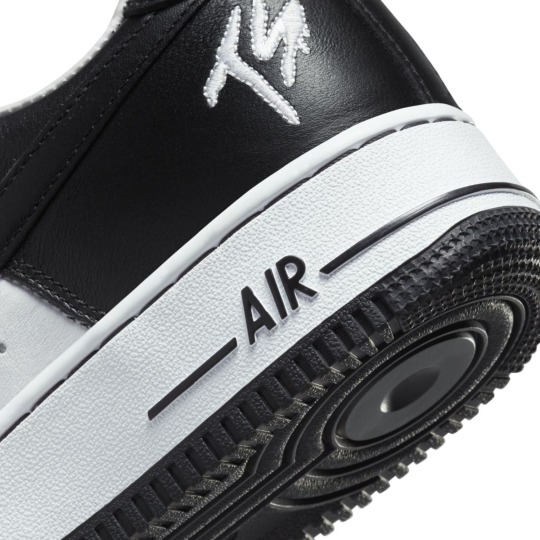#obsessivesneakerdisorder
Explore tagged Tumblr posts
Text

The Evolution of Sneaker Culture: The Shift
Sneaker culture in 1994, was a lot like Michael Jordan himself: untouchable, iconic, and still soaring from that ‘Last Shot’ magic. When Jordan Brand re-released the Air Jordan 4 in black and red, it wasn't just a shoe hitting shelves again — it was the birth of a new era. Suddenly, people weren’t just buying kicks to ball in, they were buying history. This wasn’t about sneakers anymore. It was about sneakers with a story.
Hear me out. 👂🏾👂🏾
I knew that the sneaker world was about to get a lot more crowded but was happy that the 4s ended up at Nike outlet stores.
1994: Jordan Retros Are Born, and the Game Changed.
Jordan Brand drops the retro Air Jordan 4, black and red, and boom — sneakerheads everywhere lose their minds. It’s like Jordan-mania got a sequel. No longer just about playing basketball, this retro release turned sneakers into must-have collectibles, and paved the way for the boom of re-releases we’re swimming in today. But Jordan Brand wasn’t alone in the game. Oh no, we had #K-Swiss out here dropping their signature tennis whites and staying clean in the country club scene, while #Diadora and #Ellesse were holding it down on soccer pitches. Sneaker culture wasn’t just about hoops anymore; it was becoming global.
Early 2000s: Collaborations, Hip Hop, and the Sneakerhead Scene
Fast forward to the early 2000s. While everyone was still buzzing over Jordans, something wild was happening: #adidas was teaming up with everyone from Pharrell to Missy Elliott, #FILA was riding that retro wave, and sneaker culture was going digital. Enter the message boards — places like NikeTalk, Instyleshoes where sneakerheads could gather and post news and photos of kicks and trade rare pairs like digital currency before anyone knew what cryptocurrency even was.
It wasn’t just about what you wore on your feet anymore; it was about where you were buying them, who you were talking to online about them, and how you were hustling to get the next big release. The #New Balance "Dad Shoe" (S/o Steven Smith) renaissance also quietly began, sneaking into wardrobes with its chunky, comfort-first aesthetic. The early 2000s were all about collaborations and the beginning of sneaker culture’s obsession with exclusivity. #Puma was pushing their Clyde sneakers, while #Saucony—yes, the running brand—was quietly building its own cult following with sleek, comfortable designs that were street-ready.
Legacy Brands in the Mix
While Nike and Jordan were grabbing headlines, let’s not forget the underdogs. K-Swiss continued to carve out a niche with those iconic five stripes, while Diadora and Ellesse were quietly getting love from soccer fans and Euro-stylish types. FILA, meanwhile, was riding high on the back of Grant Hill’s signature sneakers, and it would see a full-blown revival in the 2010s, with the Disruptor II becoming the chunky sneaker everyone suddenly couldn’t get enough of.
Remember when people made fun of chunky sneakers?
New Balance? Don’t sleep on them. While everyone was busy drooling over the latest Jordan or Yeezy release, New Balance was already a legend in the DMV and those who knew….knew. Those "dad shoes" became the ironic fashion choice for the cool kids, and suddenly, New Balance wasn’t just for your lawn-mowing dad — they were fire on the ‘gram.
Saucony, meanwhile, wasn’t just for marathon runners anymore; their Shadow and Jazz models crept their way into collections. (Shout out to The Floor Lords for their 2007, Courageous sneakers.)
Hip Hop and Sneaker Domination
Let’s be real: sneaker culture and Hip Hop go together like peanut butter and jelly. As sneaker culture evolved, so did its Hip Hop connection. Enter Kanye, Pharrell, and a host of people making sneakers not just part of their brand, but central to their identity. Kanye’s #Yeezy partnership with adidas wasn’t just a big deal; it was a tectonic shift. Suddenly, sneakers became art, social currency, and an investment all wrapped in one.
And let’s not forget the OG brands keeping things fresh. Puma reimagined their classics with help from collaborations like Rihanna’s Fenty line, making old-school silhouettes new again. Meanwhile, FILA staged a comeback that felt like a ‘90s nostalgia tour, with chunky sneakers like the Disruptor II becoming must-haves.
And while these brands rode the waves of Hip Hop and sneaker culture are no longer just a U.S. phenomenon. It’s global.
2010s to Now: Sustainability, Resale, and Nostalgia on Steroids
By the 2010s, sneaker culture hit hyperdrive. Online reselling became a thing, and StockX made flipping sneakers as common as flipping burgers. Suddenly, people were buying kicks not just to wear, but as an investment. Remember those New Balances your dad swore by? Well, suddenly those "dad shoes" became the ironic fashion statement everyone couldn’t get enough of.
And then came the sustainability wave. #adidas started using ocean plastic, #Nike launched the Move to Zero campaign, and Puma got serious about eco-friendly kicks. In today’s sneaker world, it’s not just about looking good, it’s about doing good, too. We’re not just talking about aesthetics anymore; we’re talking about carbon footprints.
What’s Next: Virtual Sneakers and the Metaverse
So, where’s sneaker culture going? We’ve got NFTs, virtual sneakers, and even digital sneakers for your Metaverse avatar. Yes, that’s a thing now. Brands like adidas are already dropping virtual kicks, and as much as we love the feel of fresh leather underfoot, the next frontier of sneaker culture might just be something we can’t even lace up.
At this point, sneaker culture is about a whole lot more than shoes. It’s about art, fashion, self-expression, sustainability, and even digital futures. And if there’s one thing we know for sure, it’s that sneaker culture will continue to evolve.
Change is inevitable.
#kickstory#obsessivesneakerdisorder#osdlive#sneakers#solecialstudies#fashion#education#hip hop#sneaker culture
2 notes
·
View notes
Text
When something memorable takes place, I have a way of remembering it by thinking who, what, why, and when- who I was with, what happened, why it took place, and when it took place, where I was when I heard the news.
March 26th marked the 27th anniversary of the Heaven's Gate cult mass suicide in San Diego, CA.

I was living in Boston, and trying to decide if I wanted to remain in higher education. It was around lunchtime and I was sitting in the dining hall with my colleagues, at Boston College, when the news popped up on the TVs in the hall.
It was reported that police officers were tipped off by a former Heaven's Gate member, who had received videotapes stating that by the time he watched them the group would've already be on the spaceship and leaving planet Earth.
For the folks that are old enough to remember the news reports, and the pictures: The 39 corpses wore the same black sweatsuits, the same black and white Nike sneakers, and were draped in purple cloths, that covered their bodies.
Yeah, it was some weird stuff.
Days later, we started to get more information about the group and their leader Marshall Applewhite aka Do. When the news showed Applewhite's face on screen, it wasn't hard to tell that this homie was just a little "off".

What struck the police officers, and many of the folks that showed up at the San Diego house was that the house was huge....we're talking 9,200-square-feet big!
When I started to follow the news reports, I couldn't help but notice that they all wore black outfits, but they all wore the same Nike sneakers! (Hey, I'm not afraid to say it......I paid attention to their feet, and the news kept showing the same picture over and over, so it was hard not to look at their feet!)


For a long time, I wondered what sneakers it was that the 39 dead wore, and a few newspapers reported that they all wore Nike Cortez sneakers.
Well, I KNEW just from the grainy-ass pictures (read: Before high definition television) that the sneakers were NOT Nike Cortez's.
I mean, any person could look at the picture and tell within seconds that the sneakers were not Nike Cortez. They resembled Nike Air Pegasus, but even then after looking at the pictures in The Boston Globe, I wasn't sure.
It took some research, and I was able to narrow it down to either the Nike Air Pegasus or Nike Decade. It took me almost a week to figure it out, but I finally settled on the Nike Decade.
I mean, these were folks who were coerced to give up their jobs, homes, possessions and money to Marshall Applewhite. And, I think what Applewhite did in the days or weeks leading up the mass suicide, he probably had someone visit a Nike outlet and purchase the Nike Decade sneakers for him and the rest of the folks that were going to "make that trip" on the spaceship that was following the Hale-Bopp Comet.
For years, on a number of message boards such as NikeTalk, ISS and others, people posted pictures of the bodies wearing the black and white sneakers. I've even had a conversation where someone brought up Heaven's Gate to me because they knew that I "liked" sneakers, and were surprised that I knew what sneakers they were wearing. (It's called Obsessive Sneaker Disorder.)

So, on the 27th anniversary of the Heaven's Gate cult making that "peaceful journey" on the spaceship, we pray for them and their families.




#heavens gate#Nike decade#sneakers#kickstory#osdlive#obsessivesneakerdisorder#Boston#news#solecialstudies#fashion
3 notes
·
View notes
Text
A New Era in Sneaker Culture

In recent years, the sneaker industry has witnessed a fascinating cultural shift. Long dominated by a few powerhouse brands- Nike and adidas- the landscape is now changing as sneaker enthusiasts are increasingly turning their attention to a variety of legacy brands that had previously been overshadowed. This renaissance is driven by a desire for uniqueness, nostalgia, and a deep appreciation for craftsmanship, leading to a resurgence for brands like Reebok, Brooks, ASICS, and Diadora.
The Appeal of Being Different
Today’s sneakerheads are not just collectors; we’re curators of style who seek to express our individuality through sneakers. This shift is a reaction against the saturation where we’ve seen people wearing the same (Panda Dunks) sneakers. Brands that were once considered underdogs are now in the spotlight, offering fresh alternatives that appeal to us that were born to stand out from the crowd.
Reebok’s Revival

Take Reebok, for example. Once a powerhouse in the 80s and 90s, the brand has re-emerged as a beacon of retro cool. By reissuing classic models like the Reebok Classic Leather and the Club C, the brand has successfully tapped into the nostalgia wave, while also appealing to the modern consumer’s taste for innovative technology. Collaborations with high-profile artists and designers have also reinvigorated the brand, making them more relevant today.
Also, they’re no longer owned by adidas. Thank goodness!!

Brooks Breaks the Mold
Brooks, traditionally known for its performance running shoes, has carved out a niche for itself within the lifestyle market by leveraging their reputation for quality and comfort.
The Brooks Chariot and Beast models, for instance, have gained traction among a crowd that are looking for functionality and a retro look.

ASICS and Diadora: Embracing Heritage
Similarly, ASICS and Diadora have been rediscovered by new generations. ASICS has repositioned many of its running shoes as staples in streetwear, engaging in collaborations that highlight their performance roots while appealing to fashion-forward consumers.
Diadora, on the other hand, remains a cherished name among soccer fans and has expanded its reach by diving deep into its Italian craftsmanship roots, offering premium materials and unique designs that resonate with collectors looking for exclusivity with a European flair.




Cultural Shifts and Community Building
As the culture continues to shift it reflects a broader cultural shift towards inclusivity and sustainability.
A brand such as Ninety Nine Products, which has been making dope sneakers that are focused on aesthetics and offering sustainable options show that consumers are looking for craftsmanship and storytelling.

These brands foster and thrive on building a community that values diversity, heritage, and personal expression above all.
As sneaker culture continues to transform and people embrace a wider array of brands, the brands need to share unique stories, address sustainability, and constantly build community.
The ‘Great Reset’ isn’t isolated to COVID-19, but sneaker culture too.
To be continued.
#kickstory#osdlive#sneakers#obsessivesneakerdisorder#fashion#solecialstudies#hiphop#education#footwear design#black history
4 notes
·
View notes
Text
Le Coq Sportif: Where Tennis Meets Hip Hop

Le Coq Sportif, the iconic French sportswear brand, has carved a unique niche for itself where the worlds of tennis and Hip Hop collide. With its rich heritage and commitment to both style and performance, Le Coq Sportif has become a beloved brand that effortlessly blends athleticism with urban culture.
A Brief History
Founded in 1882 by Émile Camuset, Le Coq Sportif initially focused on producing high-quality sports apparel for athletes across a variety of disciplines. However, it wasn't until the 1920s that the brand ventured into the world of tennis, establishing itself as a prominent player in the sport. Le Coq Sportif's tennis shoes quickly gained popularity for their superior comfort and durability, becoming the footwear of choice for many professional players.
Tennis Connection
Le Coq Sportif's connection to tennis runs deep. Over the years, the brand has collaborated with several tennis legends, including the likes of Arthur Ashe and Yannick Noah, both of whom left an indelible mark on the sport. The brand's tennis apparel, characterized by its clean lines, classic designs, and attention to detail, has been worn by numerous players on the world stage.
Hip Hop Influence
While Le Coq Sportif's roots lie in tennis, the brand has also made significant inroads into the Hip Hop scene.

In 1987, DJ Jazzy Jeff and The Fresh Prince rocked Le Coq Sportif gear and introduced the brand to Hip Hop fans.
In recent years, Le Coq Sportif has become a favorite among Hip Hop artists, who appreciate its retro aesthetic and nostalgic appeal. The brand's signature rooster logo, known as "le coq gaulois," has become a symbol of authenticity and street culture.

Collaborations and Crossovers
One of the ways Le Coq Sportif has cemented its connection to both tennis and Hip Hop is through collaborations with notable figures from both realms. These collaborations have resulted in unique collections that seamlessly blend the worlds of sport and music.
The brand's partnership with renowned rapper and music producer Jay-Z is a prime example of this fusion. Jay-Z's collaboration with Le Coq Sportif brought forth a limited-edition collection that paid homage to the brand's tennis heritage while infusing elements of Hip Hop culture. This collection, featuring stylish tracksuits, sneakers, and accessories, perfectly captured the essence of Le Coq Sportif's dual identity.
The Le Coq Sportif Aesthetic
When it comes to Le Coq Sportif's aesthetic, it can be best described as a harmonious blend of sporty elegance and urban flair. The brand's designs exude a timeless appeal, drawing inspiration from both its tennis heritage and the vibrant energy of the Hip Hop community.
Le Coq Sportif's tennis shoes, with their sleek silhouettes and attention to craftsmanship, provide the perfect balance between performance and style. Meanwhile, their apparel combines functional elements with fashion-forward designs, making them suitable for both the court and the streets.
#le coq sportif#kickstory#osdlive#sneakers#obsessivesneakerdisorder#hiphop#solecialstudies#dj jazzy jeff#the fresh prince of bel air#protect our culture
8 notes
·
View notes
Text
“All Up In The Biz” premieres on SHOWTIME August 11th (The 50th anniversary of Hip Hop)!

youtube
#biz markie#hip hop#documentary#rap#kickstory#sneakers#obsessivesneakerdisorder#solecialstudies#music#fashion#protect our culture#Youtube
9 notes
·
View notes
Text

Stepping into STEAM Education: Unveiling the Power of Sneakers
In the world of education, innovation knows no bounds. Imagine a classroom where the rhythm of footsteps intertwines with the melody of learning, where sneakers become more than just fashion statements – they become educational tools.
Exploring the Data
Let's start by delving into the statistics that showcase the potential impact of incorporating sneakers into STEAM lessons. According to a study conducted by the National Center for Education Statistics, hands-on learning experiences, like those involving tangible objects such as sneakers, enhance student engagement and retention rates. The tactile nature of sneakers can serve as a gateway to various STEAM concepts, making learning a dynamic and memorable experience.
STEAM Lessons in Every Step
Breaking down the silos between subjects, sneakers become versatile teaching tools. For instance, the anatomy of a sneaker offers a real-world application for biology lessons. Students can explore the materials used, understand the biomechanics of comfort, and even dive into the environmental implications of manufacturing processes.
Utilizing technology, students can explore the engineering behind sneaker design. 3D modeling, prototyping, and understanding the physics of shoe performance become integral components of the lesson plan. Data from the Bureau of Labor Statistics emphasizing the growing demand for STEM-related occupations adds weight to the argument for embedding these concepts early in education.
The Artistry Beyond Aesthetics
Beyond the technical, sneakers embody an art form that bridges the gap between creativity and education. Visual arts classes can explore design principles, color theory, and cultural influences through the lens of sneaker culture. Drawing on sources like The Fashion Institute of Technology, we can illustrate how sneakers serve as a canvas for self-expression and cultural representation.
CommUNITY and Collaboration
Sneakers also facilitate collaboration and teamwork, vital skills in the professional world. Data from the P21 organization highlights the importance of fostering skills like collaboration, critical thinking, and creativity, all of which are inherent in the STEAM-infused sneaker education model.
As we lace up our sneakers and step into the future of education, the integration of STEAM principles becomes a thrilling adventure. The statistics and data speak volumes about the potential impact on student engagement, skill development, and the cultivation of a generation ready to stride confidently into a STEAM-powered world.

#solecial studies#education#kickstory#osdlive#sneakers#obsessivesneakerdisorder#hiphop#knowledge#brooklyn#houston#usvi#fashion
2 notes
·
View notes
Text
Charles Barkley: The Sneaker Game-changer

In the world of sports, there are athletes who go beyond their game and become absolute legends.
Well, Charles Barkley is one of those icons. Sure, he had mad skills on the basketball court, but his impact reached further than that.
Charles Barkley quickly became a household name in basketball. The guy was a beast! He had insane athleticism and played with such power that they nicknamed him "The Round Mound of Rebound." But you know what? It wasn't just his game that had people talking—it was his style and personality, too.
In 1993, Nike dropped a gamechanger in the sneaker world—the Air Force Max. This shoe was all about Barkley. It perfectly captured his larger-than-life persona and his dominating style of play. Think vibrant colors, a mid-cut design, and an in-your-face Air unit.
The Air Force Max became an instant fan favorite, setting the stage for Barkley's impact on sneaker culture.

Fast word to 1993, when Barkley starred in a commercial that had everybody buzzing. He boldly declared, "I am not a role model."
Whoa, talk about making a statement! This campaign sparked a whole lot of debate about what athletes should represent. But you know what? Barkley's candidness and fearlessness only made him more intriguing. Sneaker obsessed folks everywhere were drawn to his rebellious spirit and unique perspective.

Nike saw the opportunity and ran with it. In 1994, they launched the Barkley signature line. These kicks were all about capturing Barkley's style and personality while delivering killer performance. We're talking about iconic models like the Nike Air Max2 CB '94, Nike Air Max CB34, and Nike Air Max CB 94 Low. These had distinct designs, visible Air units, and colors that screamed attitude.
Sneakerheads went wild, and the Barkley line became an absolute must-have for collectors.
Barkley wasn't just a basketball star or a sneaker icon. He was a cultural force. His unapologetic self-expression and refusal to conform to societal norms struck a chord with fans. He inspired folks to embrace their individuality and not be afraid to stand out.
#kickstory#osdlive#charles barkley#nike#sneakers#protect our culture#obsessivesneakerdisorder#hiphop#solecialstudies#walkgood#fashion#music#nba
4 notes
·
View notes
Text
Adidas Stan Smith Boost: The Perfect Mix of Classic and Comfy
I’m always on the hunt for kicks that blend style with comfort.
Well, guess what?
The adidas Stan Smith sneakers with Boost are here to answer that call and then some!
The Stan Smith Legacy
Let's start with the Stan Smiths themselves. These sneakers have been around since the '60s, named after tennis legend Stan Smith. They're known for their sleek design and that famous green heel tab. They're not just shoes; they're an icon.

Boost Technology - It's a game changer
Boost tech came on the scene and took the sneaker world by storm and for a good 18 months they were hot.
Made from a bunch of tiny TPU pellets that come together to create a midsole that's super light and incredibly responsive.

Could this be the Boost (pun intended) that adidas is looking for? 🤔
Classic Meets Comfort
The great thing about the Stan Smith’s with Boost is that they combine a timeless look with this cutting-edge cushioning. You get a classic, versatile silhouette and comfort that's hard to top.
Whether you're trooping through the city, hitting the gym, or just doing your daily thing, these sneakers have your back. They're ideal for everyday wear, and that Boost cushioning ensures your feet stay happy.

Style and Versatility
Here's the beauty of the Stan Smiths: they're chameleons. You can dress them up or down effortlessly. Throw on some jeans and a tee for a laid-back vibe, or pair them with a suit to add an urban twist to your formal game. The white leather upper is a blank canvas for your personal style.
Your Take
Now, here's where I'd love to hear your thoughts. How do you feel about blending classic sneaker designs with the latest comfort tech like Boost?
Do you think style should always come with comfort, or do you sometimes prioritize one over the other?👟✨
#adidas#stan smith#kickstory#sneakers#osdlive#obsessivesneakerdisorder#hiphop#fashion#solecialstudies#protect our culture
4 notes
·
View notes
Text
Fat Joe's 'Terror Squad' AF1s: 18 Years in the Making
The world of sneakers and sneaker culture continue to change and this is very good for the Culture.

Retrospectives and reissues have become common practice, but sometimes, a shoe emerges that defies the conventional timeline of releases. The "Terror Squad" Air Force 1s, championed by Fat Joe, fall into this category. Released 18 years after their initial inception, these sneakers carry a unique history and significance within sneaker culture.
The Nostalgic Resurgence
The year was 2005, when Nike first introduced the "Terror Squad" Air Force 1s, a collaboration with Fat Joe, the Bronx-bred rapper and sneaker enthusiast. These shoes quickly became iconic, featuring a striking combination of colors and materials that paid homage to Fat Joe's Terror Squad crew.

The sneakers embodied the vibrant and bold style of early 2000s Hip Hop fashion, with their rich burgundy suede, gold accents, and an embroidered "TS" logo on the side.
At the time of their original release, the "Terror Squad" Air Force 1s garnered considerable attention, but were limited in availability. Consequently, they became a coveted gem among sneakerheads.

Fast forward to 2021, and Nike decided to revisit this classic silhouette, setting the stage for an exciting revival.
The Delayed Gratification
Releasing these sneakers 18 years later bring a sense of delayed gratification for fans and collectors alike.

It's not uncommon for brands to revisit their archives, but this particular release is about celebrating a bygone era of Hip Hop and sneaker culture as it is about fashion.
The "Terror Squad" Air Force 1s tap into the sentimentality of sneaker enthusiasts who grew up during the early 2000s, a time when Rap music and urban fashion were closely intertwined.

Fat Joe himself represents an era when sneaker endorsements and collaborations were less common, making his partnership with Nike feel like a special moment in sneaker history.
The Impact on Sneaker Culture
This reissue serves as a reminder of the enduring power of nostalgia in sneaker culture. It's not just about the shoes themselves; it's about the stories, memories, and emotions associated with them. (The Kickstories)

The "Terror Squad" Air Force 1s evoke a sense of nostalgia, taking fans back to a time when Hip Hop and sneakers were inseparable.
In a world where sneaker drops can sometimes feel routine, the "Terror Squad" Air Force 1s bring back a sense of excitement and anticipation.
Sneakerheads, old and new, eagerly await the release, not just for the shoes, but to relive a piece of Hip Hop history.
They’re more than just a pair of sneakers; they’re a time capsule that transports us back to an era when Hip Hop and urban fashion were at their peak.
This release is a testament to the enduring influence of both Fat Joe and sneaker culture, showing that the intersection of music and fashion continues to captivate hearts, minds and feet alike.

So, if you decide to grab a pair of these iconic sneakers, consider yourself not only a sneakerhead but also a guardian of a piece of cultural history.
#fat joe#walkgood#kickstory#osdlive#sneakers#hiphop#solecialstudies#fashion#music#rap#obsessivesneakerdisorder#nike#sneaker culture#protect our culture#protect sneaker culture
2 notes
·
View notes
Text
Mike Jones: The Significance of His Cell Phone Number in the Song "Who is Mike Jones?"
In the realm of hip-hop, there have been numerous artists who have left a lasting impact through their music, but only a few have managed to achieve true notoriety by integrating their personal information into their art. One such artist is Mike Jones, whose song "Who is Mike Jones?" gained widespread attention and sparked curiosity, thanks to his audacious act of sharing his cell phone number with the world. In this article, we delve into the importance of this decision and the lasting impact it had on his career.
A Bold Move
Released in 2005, "Who is Mike Jones?" quickly became a chart-topping hit, propelling the Houston-based rapper into the spotlight. However, it was not just the catchy beats and clever lyrics that made this song unforgettable. It was the audacity of Mike Jones himself, who boldly provided his cell phone number during the chorus: "281-330-8004, hit Mike Jones up on the low."
Instant Connection
By giving out his personal cell phone number in the song, Mike Jones created an instant connection with his fans. It was a direct invitation for listeners to reach out to him and engage in a unique form of interaction. This move not only showed his accessibility but also established a genuine bond between the artist and his audience. Fans felt a personal connection to Mike Jones, making him stand out in an industry where artists can often seem distant and unapproachable.
A Marketing Masterstroke
While the act of sharing a cell phone number may seem unusual and risky, it proved to be a brilliant marketing strategy. Mike Jones leveraged the curiosity generated by the song to build a fan base and boost his career. People flooded his phone with calls and messages, wanting to know more about the man behind the music. Jones seized this opportunity to promote his music, events, and merchandise directly to his newfound audience, effectively cutting through the noise of traditional promotional channels.
Social Media Precursor
Mike Jones' decision to share his cell phone number predates the rise of social media platforms and the direct connections they facilitate between artists and their fans. In a way, his move foreshadowed the era of social media, where musicians, actors, and public figures actively engage with their followers. Mike Jones established a direct line of communication with his fans, prefiguring the kind of interactivity that would become a hallmark of the digital age.
The Legacy of "Who is Mike Jones?"
Even though Mike Jones may not be as prevalent in the mainstream music scene today, his bold move remains a significant part of his legacy. By sharing his cell phone number in "Who is Mike Jones?," he demonstrated a new way for artists to connect with their audience and pioneered a unique form of engagement. His act of accessibility and willingness to connect on a personal level set him apart and left an indelible mark on the hip-hop landscape.
#mike jones#who is Mike Jones#hip hop#rap#houston#Texas#HTx#osdlive#obsessivesneakerdisorder#solecialstudies#protect our culture
2 notes
·
View notes
Text
Cheo Hodari Coker @cheo_coker wrote an amazing article for GQ about Busta Rhymes, his impact on Hip Hop, the ups and downs, and how his family and friends motivated him to take better care of himself.
It was published in November 2020.

#busta rhymes#gq magazine#hiphop#rap#osdlive#fashion#family#health#jamaica#caribbean#solecialstudies#a tribe called quest#obsessivesneakerdisorder
2 notes
·
View notes
Text
I held high hopes for “Air” and it didn’t disappoint me at all.

Shout out to Bryan aka @Kadoma , @DJ_Oakcliff and the @SneakerSummit 🤘🏾 Crew for putting on a great screening of @AirMovie !

No spoilers here, but I will say that if you’re obsessed with sneaker culture, and the how and why Michael Jordan signed with Nike, then you’re going to thoroughly enjoy the film.


#AirMovie#air jordan#sneakers#sneaker culture#osdlive#kickstory#obsessivesneakerdisorder#protect our culture#protect sneaker culture#nike sneakers#hiphop
5 notes
·
View notes
Text
One thing about #CharlesBarkley is you’re going to get the truth when you interview him and you’re going to laugh. 😂

In his #60Minutes interview we get a glimpse of where he grew up and how ‘lucky’ he was to be Charles Barkley.
youtube
#kickstory#charles barkley#nba#basketball#hall of fame#LeedsAL#osdlive#sneakers#obsessivesneakerdisorder#60 minutes#Youtube
3 notes
·
View notes
Text
I just learned about Kizik 👟sneakers that make it easy for people to step into their sneakers, using a mashable heel.
For many people that deal with dexterity or mobility issues, these sneakers solve this problem.

3 notes
·
View notes
Text
AND1 Mixtape: The Streetball Revolution That Changed Basketball Culture
The Birth of the AND1 Mixtape Series: A Game-Changer in Basketball Culture

In the late 1990s, basketball was experiencing a cultural shift. While the NBA had its superstars and global reach, a different kind of game was thriving on the blacktops across America. The game was raw, flashy, and unapologetically expressive—streetball was more than just a style of play; it was an attitude, a movement.
AND1, a then-upstart basketball apparel company, saw an opportunity to embrace this underground culture. What started as a grassroots marketing strategy—giving away VHS tapes featuring streetball highlights—quickly turned into a global phenomenon. The first AND1 Mixtape, released in 1998, featured legendary point guard Rafer “Skip to My Lou” Alston, whose jaw-dropping handles and ankle-breaking crossovers had already made him a playground legend. The response was electric.
What made AND1 Mixtape unique was its fusion of basketball, hip-hop, and street culture. The videos weren’t just about basketball highlights; they were about storytelling. Set to hard-hitting beats, each mixtape captured the energy of the streets, giving rise to a new wave of basketball that celebrated creativity and individuality. AND1 wasn’t just a brand—it was a lifestyle.
Iconic Mixtape Moments: Where Legends Were Born
The AND1 Mixtape Tour took streetball from the local courts to the national stage, giving hoopers across the country a chance to showcase their skills. The tour introduced the world to some of the most electrifying and innovative players the game had ever seen:
• Rafer “Skip to My Lou” Alston – The original mixtape icon. His legendary ball-handling and smooth game made him the face of streetball and the first player to successfully transition from the AND1 circuit to the NBA.
• “Main Event” (Skip Dillard) – A high-flying dunker whose power and finesse made him one of the most exciting players on the tour.
• “The Professor” (Grayson Boucher) – A white, undersized guard who defied expectations with his insane dribbling, quickness, and flair, proving that heart and skill could outshine athleticism.
• “Hot Sauce” (Anthony Heyward) – The ultimate showman. His absurdly deceptive crossovers, behind-the-back moves, and trash talk made him a fan favorite and the ultimate ankle-breaker.
From no-look passes to gravity-defying dunks, AND1 Mixtape gave these players a platform to become basketball superstars—without ever stepping foot in the NBA. The mixtapes weren’t just entertainment; they were a cultural movement, inspiring kids across the world to hit their local courts and add some streetball flavor to their game.

The Impact on Basketball Culture: More Than Just a Brand
The AND1 Mixtape series did more than just put a spotlight on playground legends—it changed the way basketball was played, watched, and marketed.
The Influence on the NBA
Before AND1, flashy moves were often seen as unnecessary or even disrespectful. But after the mixtape craze took off, NBA players started incorporating streetball-style handles into their game. Players like Allen Iverson, Jason Williams, and Jamal Crawford took inspiration from the AND1 circuit, popularizing crossovers, ankle-breakers, and no-look passes on the NBA stage. Today, players like Kyrie Irving, LaMelo Ball, and Trae Young showcase moves that were once exclusive to the streetball courts.

The Influence on Fashion
AND1 wasn’t just about the game—it was about the culture surrounding it. The brand’s oversized tees, baggy shorts, and bold sneakers became a uniform for streetballers and hip-hop artists alike. AND1’s logo—a faceless hooper—became an emblem of basketball authenticity. Even NBA players rocked AND1 gear, with Stephon Marbury and Vince Carter famously wearing AND1 sneakers during their early years in the NBA.
The Influence on Music
The mixtapes weren’t just about the highlights—the beats were just as iconic. Each mixtape was set to a soundtrack of Hip Hop bangers, with artists like Nas, DMX, and Mobb Deep providing the gritty, high-energy backdrop. This fusion of basketball and Hip Hop solidified the connection between the two cultures, paving the way for NBA players to venture into rap and Hip Hop artists to embrace basketball as part of their identity.

The AND1 Legacy: The Game Will Never Be the Same
Though AND1 eventually lost its grip on the sneaker market, its impact on basketball is undeniable. The AND1 Mixtape series gave a voice to the streets, proving that talent wasn’t limited to the NBA. It redefined the game, making style, creativity, and entertainment just as important as winning.
Today, the influence of AND1 lives on in every flashy crossover, every trick pass, and every streetball tournament around the world. The game of basketball isn’t just about fundamentals anymore—it’s about expression. And for that, we have AND1 Mixtape to thank.
👟💨 What’s your favorite AND1 Mixtape moment? Drop your thoughts in the comments below!
#AND1#basketball#sports#osdlive#sneakers#Hip Hop#obsessivesneakerdisorder#fashion#outdoor basketball
1 note
·
View note
Text
We’re living through a period where #theGreatReset made us all sit down…..all the way down. ⬇️
We all got ‘touched’.
It didn’t matter what race we are, how much money we have, what type of home we live in or where we worship. 🙌🏾❤️🙏🏾
We said goodbye to loved ones and questioned life.
I know that I did and I still question life.
To see the players representing #USAbasketball and #TeamUSA brings me join as they greet one another. 😎
Back at it. 🇺🇸
#team usa#usa basketball#olympics#kickstory#osdlive#sneakers#obsessivesneakerdisorder#solecialstudies#education
0 notes